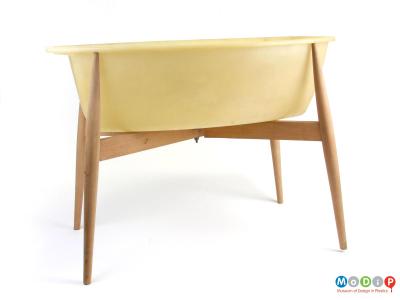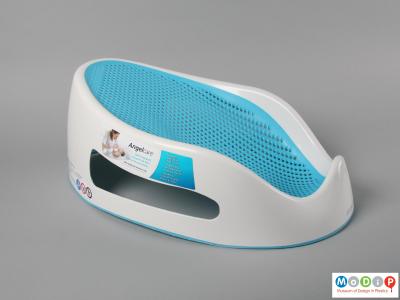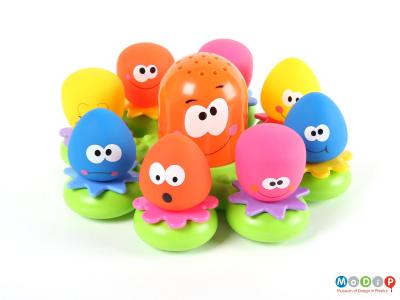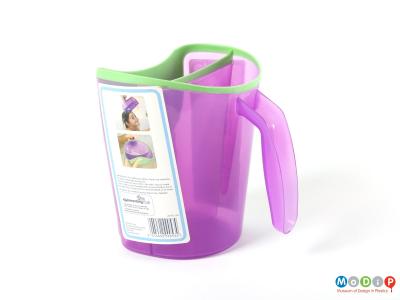Children can drown in the smallest amount of water so they are often bathed in specially designed baby baths. Martyn Rowlands' Superbath (1), won the Council of Industrial Design’s Design of the Year Award in 1958. Traditionally, baby baths were made of tin or enamel. This bath is made of polythene (PE), a material which is warmer and softer to touch, and less slippery than these traditional materials. The Superbath also has a plug at one end making it easier to drain than baths without one.
The Anglecare Soft Touch Bath Support (2) allows the care giver to bathe the baby in a large bath without risk of the child slipping under the water. The soft central section moulds to the baby’s body while the sturdy sides offer strong support.
Children do not always enjoy having a bath. It is common for toddlers who once enjoyed being bathed to acquire a sudden and unexplained fear of water. Toddlers do not have a comprehension of scale and can sometimes be fearful of falling down the drain. Care givers need to make bathing a fun experience to alleviate the fear. Bath toys (3) that float on the water or have suction pads enabling them to stick on the bath or tiles can make bathtime feel more like playtime.
Some children detest having water and soap in their eyes which can occur when having their hair washed making bathtime a traumatic experience. This jug (4) has a soft front section that sits against the forehead and prevents water falling over the face. The double inner compartment helps to distribute the water evenly over the head.




